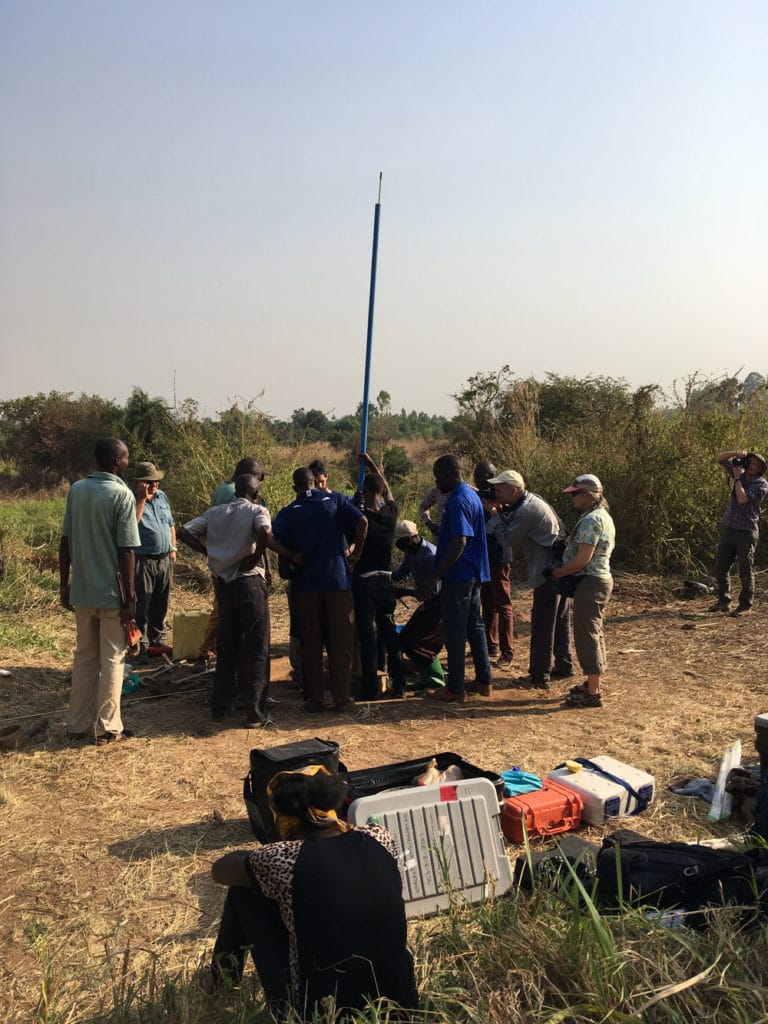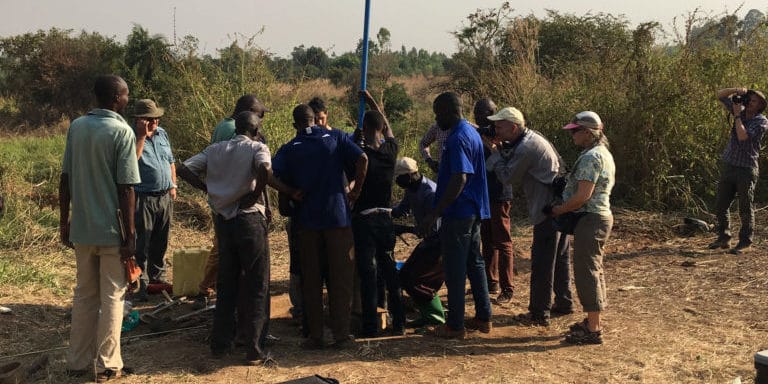Today was our first day of real work, though still a bit of a slow start. Our group from Canada isn’t just doing the work by ourselves. Through IsraAID we are connected to a group of 25 students who have all been learning about water exploration geophysics and well repair for the past few years. So the first thing to do yesterday was gather at the university, meet all the student and get them oriented a bit.
We arrived at our first site around 11:30 and broke into 3 teams. The largest team worked on a broken well – they disassembled the pump, did some water tests, put a camera down the well to see where the screen was and then reassembled the fixed well. This was mostly run by Ugandans who fix wells for a living. Unfortunately we could not do any geophysical borehole logging because that equipment is still lost at the airport.
The other two teams did resistivity surveys. This identifies rock properties in the ground to help locate water. One team did the survey right next to the well getting fixed – this let’s us understand the resistivity results better since we can tie it to known properties of the borehole. The other team went a few km away to do exploration and site a well location in an area with no wells.

Installing the fixed well pump. The pipe needed replacing (was rusted galvanized steel that was replaced by PVC) and the pump needed a new gasket.

Max Layton, Geophysicist at Advisian, is teaching a few students – Proscovia, Lucy, Francis and Patrick – along with heads of the village about our resistivity survey. Read Journal #3





